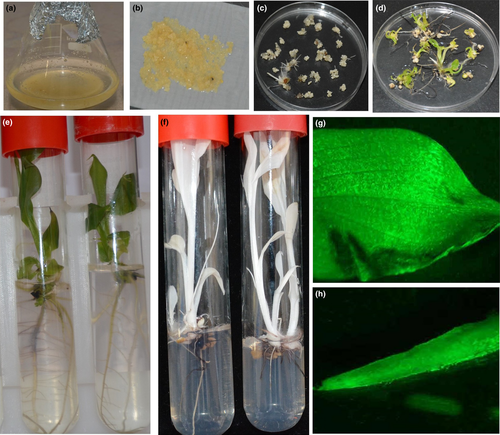CRISPR/Cas9‐based genome editing is offering new hope for protecting a critical food security crop by developing climate-smart banana varieties.
Research to identify the genes associated with stress‐tolerant traits and other uses of gene editing and genetic engineering to help banana varieties adapt to a changing climate is highlighted in an April 15 article published in Food and Energy Security, the journal of the Association of Applied Biologists.
Adaptation is important because banana is a major food source for some 500 million people. It’s grown in more than 140 tropical and subtropical nations, primarily Africa, which produces about a third of the world’s crop. In addition to supporting food security, banana is an valued cash crop for smallholder farmers, who typically sell to local and regional markets.
But this critical source of food and income is increasingly threatened by numerous pests and diseases, including black Sigatoka, yellow Sigatoka, leaf spot disease, bacterial wilt, panama disease, banana bunchy top virus (BBTV) and banana streak virus (BSV), nematodes and weevils. Now the higher temperatures and drought brought by climate change are beginning to take a toll.
“There is a huge yield gap in banana production in the areas where several of these pathogens and pests are present together,” wrote researchers Leena Tripathi, Valentine Otang Ntui and Jaindra Nath Tripathi. “Some of these diseases are wiping out banana from the infected fields.”

Other farmers, particularly those who depend on rainfall for irrigation in Uganda, are experiencing significant losses due to drought.
“Strategies need to be developed for banana production to adapt to extreme changes in climate, particularly rainfall and temperature in the banana‐growing areas,” they wrote. “One option is to utilize modern breeding tools such as genetic modification and genome editing for crop improvement.”
These methods are particularly useful with banana, a plant that is difficult to breed through conventional methods. “Genetic engineering…allows the transfer of useful traits from different species or across the same species, bypassing natural bottlenecks of breeding, thus making it applicable for the improvement of banana,” they wrote. “It provides a further option for the development of improved varieties resistant to diseases, particularly when no host plant resistance is available among banana germplasm.”
Researchers around the globe are currently trying to deliver preassembled Cas9 protein‐gRNA ribonucleoproteins (RNPs) directly into plant cells, where they immediately edit the target sites and then are rapidly degraded, which reduces off‐target effects andleaves no traces of foreign DNA elements. The resulting plants would be free of transgenes and thus not subject to the GM regulatory process, according to the article.
Climate change is also expected to impact pathogen and pests, likely by increasing their aggressiveness and numbers. “Therefore, there is urgent need to develop improved varieties with broad spectrum and durable resistance to various diseases and pests,” the researchers wrote. “Modern plant biotechnology provides new tools for the development of disease and pest‐resistant transgenic banana plants through either overexpression of genes associated with defense or the editing of genes responsible for susceptibility or the negative regulator of the defense pathway.”
Gene editing also shows promise for breeding drought tolerance in bananas. “Extreme weather might suppress the immunity of banana against pathogens; therefore, evaluation of the available disease‐resistant varieties of banana under conditions of higher temperature is needed to identify sustainable resistance allowing plants to cope with epidemics under elevated temperature,” the authors wrote.
